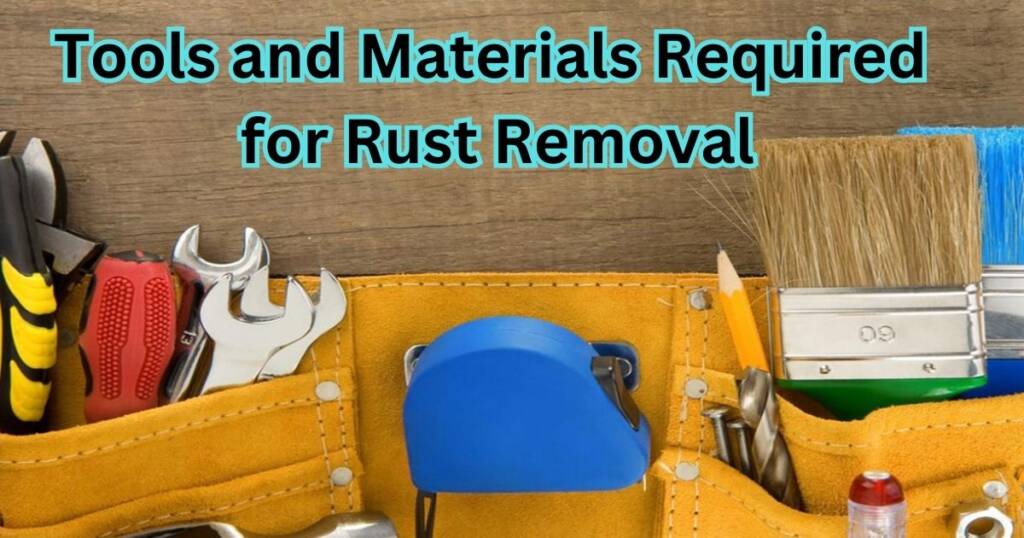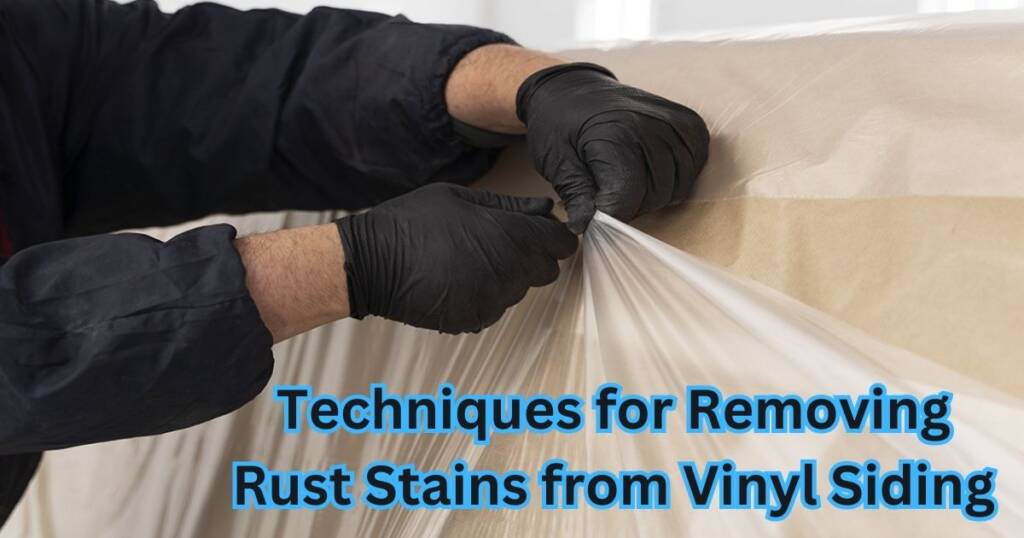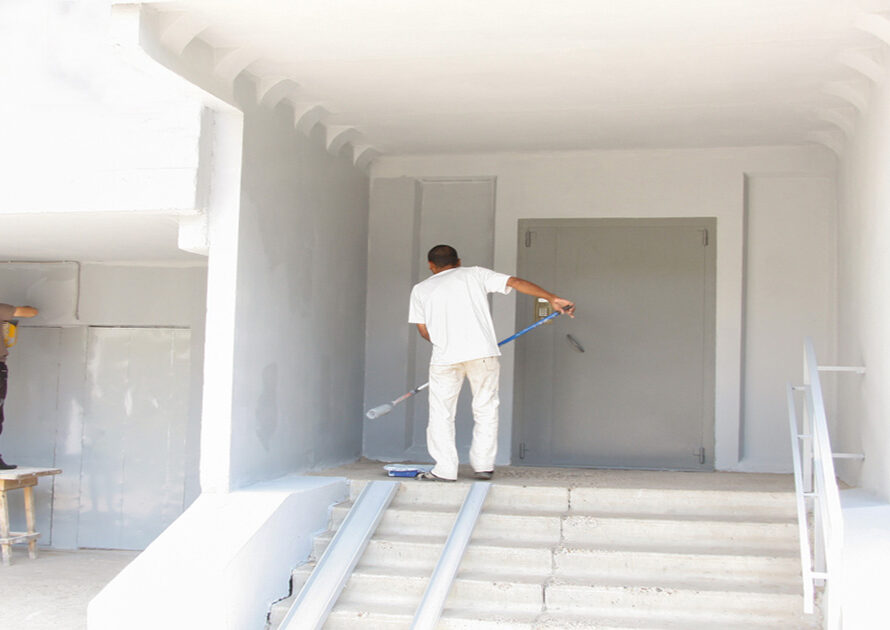Rust stains on your vinyl siding might be an eyesore, but you don’t have to live with them. TN Painting provides the techniques and tactics you need to remove rust stains from vinyl siding quickly and efficiently. With the appropriate procedure, you can get rid of ugly rust stains and make your house appear like new. Follow these procedures and you’ll have your vinyl siding looking immaculate again in no time.
Understand the Rust Stains
Rust spots on your vinyl siding may be a real eyesore. They may make your house seem dusty, neglected, and generally unpleasant. But before you can properly remove these rust stains, it’s vital to understand what produces them and why they appear.
Rust stains often appear when metal items or components come into touch with the vinyl siding. This may happen when nails or screws in the siding get corroded or when metal items, such as outdoor furniture or equipment, lay on the vinyl surface for an extended period of time. Over time, the metal might corrode and transmit its stain into the vinyl, generating those unattractive markings. It’s vital to realize that not all vinyl siding is made equal when it comes to its resistance to rust stains. Higher-quality vinyl siding is frequently more resistant to staining, while lower-quality siding may be more subject to rust damage. Understanding the fundamental cause of the rust stains is vital since it may help you avoid them from repeating in the future. By treating the cause of the rust, whether it’s a corroded nail or a rusty piece of furniture, you may take proactive actions to safeguard your vinyl siding from additional damage.
In the following sections, we will detail the equipment and products you will need to efficiently remove rust stains from your vinyl siding. We will also provide step-by-step directions on how to remove these stains and prepare the surface for cleaning. So, stay tuned and be ready to make your vinyl siding appear brand new again!

Tools and Materials Required for Rust Removal
To properly remove rust stains from your vinyl siding, you’ll need a few equipment and supplies to get the job done perfectly. Here’s what you’ll need:
- Protective Gear: Before you begin, be sure you safeguard yourself by using gloves, safety glasses, and a face mask. Rust removal may entail powerful chemicals, so it’s crucial to keep oneself safe during the procedure.
- Scrub Brush: A scrub brush with firm bristles can help you loosen and remove the rust spots from your vinyl siding. Look for a brush particularly built for outdoor usage and harsh on stains.
- Rust Stain Remover: There are several rust stain removers available on the market, particularly developed to treat rust stains on different surfaces. Look for a rust stain remover that is appropriate for vinyl siding and follow the recommendations on the label for the best results.
- Soft Cloth or Sponge: You’ll need a soft cloth or sponge to apply the rust stain remover to your vinyl siding. Choose a non-abrasive cloth or sponge to prevent harming the surface.
- Bucket of Water: Fill a bucket with water to rinse off the rust stain remover and any leftover residue. Make sure the water is pure and devoid of any cleaning products.
- Hose or Pressure Washer: Finally, you’ll need a hose or pressure washer to rinse off the rust stain remover and completely clean your vinyl siding. If using a pressure washer, be careful to set the pressure to a proper level to prevent harming the siding.
By collecting these equipment and supplies, you’ll be well-prepared to handle those persistent rust spots on your vinyl siding. Remember to always follow the directions on the rust stain remover and take necessary safety measures during the procedure.
How to Remove Rust Stains
Now that you understand the sources and consequences of rust stains on vinyl siding, it’s time to dig into the step-by-step procedure for removing them. With the correct equipment and supplies, you’ll be able to make your vinyl siding seem as good as new. To start, assemble your protective gear, including gloves, safety glasses, and a face mask. Rust removal frequently requires utilizing powerful chemicals, so it’s vital to protect your safety. Once you’re adequately suited up, it’s time to go on to the following phases. First, moisten the afflicted area of the vinyl siding with clean water. This will assist in loosening any dirt or debris that may be present. Then, apply the rust stain remover to the stains according to the directions on the container. Be careful to cover the whole stain and let the remover stay for the prescribed period of time.
Next, grab your scrub brush with strong bristles and start cleaning the soiled area. Apply pressure while scrubbing to efficiently remove the rust spots. As you scrape, you may see that the spots begin to go away. After washing, rinse the area well with clean water. This will remove any residual rust stain remover and disclose the real status of your vinyl siding. If required, repeat the treatment for persistent stains. Finally, check the area to confirm that all rust spots have been effectively eliminated. If there are any leftover marks, you may try using a different rust stain remover or consider obtaining expert aid.
By following these procedures, you’ll be able to properly remove rust stains from your vinyl siding and restore its clean look. With a little work and the appropriate strategy, your house can be rid of ugly rust stains and will once again have the curb appeal you seek.

Preparing the Surface for Cleaning
Before you dig into cleaning rust stains from your vinyl siding, it’s vital to thoroughly prepare the surface. This step is vital in ensuring that the cleaning procedure is successful and that you don’t cause any harm to your siding. To start, clean any debris or loose soil from the area surrounding the rust streaks. Use a broom or a soft brush to gently sweep away any loose particles. This will prevent any dirt from becoming trapped beneath the cleaning solution and possibly harming the surface of your vinyl siding. Next, wet the whole surface with clean water. This will assist in further dislodging any dirt or grime that may be present on the surface. It will also make it simpler for the cleaning solution to penetrate and remove the rust stains. Once the area is moist, it’s time to apply the cleaning solution. You may use a commercially available vinyl siding cleaner or prepare your own solution using a combination of mild detergent and water. Be careful to follow the directions on the cleaner or use the right dilution ratio for the homemade solution.
Apply the cleaning solution to the damaged areas, concentrating on the rust stains. Use a soft cloth or sponge to gently scrape the surface, moving in circular movements. Avoid using any abrasive tools or hard scrub brushes, as they might harm the vinyl siding. After washing, rinse the area well with clean water. This will remove any residue from the cleaning solution and leave your vinyl siding clean and ready for the next stage in the procedure. By carefully prepping the surface before cleaning, you’ll guarantee that the rust stain removal method is as successful as possible. Taking the time to remove dirt and use a suitable cleaning solution will help you obtain the greatest results and keep your vinyl siding looking like new. So, be ready to say goodbye to those unattractive rust spots!
Use Cleaning Solutions for Rust Removal
When it comes to eliminating rust stains from your vinyl siding, having the correct cleaning solution is vital. There are various efficient cleaning products available on the market, as well as homemade choices that may get the job done.
One common commercially available vinyl siding cleanser is Oxalic Acid. This strong rust stain remover is particularly developed to combat difficult stains on vinyl siding. Oxalic Acid is particularly efficient in breaking down rust particles and removing them from the surface of your siding. Simply follow the directions on the label, and you’ll be on your way to a rust-free exterior. If you prefer a DIY approach, blending equal parts white vinegar and water may also be an efficient method to remove rust stains. Vinegar is recognized for its acidic characteristics, which help break down rust particles and make them simpler to remove. Apply the mixture to the afflicted region and let it stay for a few minutes before cleaning with a soft cloth or sponge. Another alternative approach is a blend of lemon juice and baking soda. Lemon juice contains citric acid, which functions as a natural rust remover. Mix the lemon juice with baking soda to produce a paste and apply it to the rust spots. Let it rest for a few minutes, then clean the area with a soft cloth or sponge. No matter the cleaning solution you use, always remember to rinse the area completely with clean water after applying the solution. This will guarantee that any residue is eliminated, leaving your vinyl siding clean and ready for the next stage in the procedure. With these cleaning methods in your arsenal, you’ll be able to attack those persistent rust stains and restore your vinyl siding to its former beauty.

Techniques for Removing Rust Stains from Vinyl Siding
Now that you have all the essential equipment and supplies, let’s delve into the procedures for removing those persistent rust spots from your vinyl siding.
One option that may be useful is utilizing a rust stain remover particularly formulated for vinyl siding. Follow the directions on the label to apply the remover to the discolored areas. Let it rest for the required period of time to enable the remover to break down the rust particles. Then, using a stiff-bristled scrub brush, gently scrape the spots in circular movements. Apply moderate pressure when scrubbing to guarantee full eradication of the rust spots. If you want a more natural method, you might try using lemon juice or vinegar. These acidic compounds may help break down rust particles. Mix lemon juice or vinegar with equal amounts of water and apply the solution to the rust spots. Let it lie for a few minutes before cleaning the spots with a gentle cloth or sponge. Another approach to explore is using a paste comprised of baking soda and water. Baking soda has soft abrasive characteristics that may help remove rust spots from the surface of your vinyl siding. Apply the paste to the soiled areas and gently clean with a soft cloth or sponge.
Remember to always rinse the area completely with clean water after using any cleaning solution. This will guarantee that all residue is gone, leaving your vinyl siding clean and ready for the next stage in the procedure. By following these approaches, you’ll be able to properly remove rust stains from your vinyl siding and restore its clean look.
After cleaning dust stains can vinyl siding be painted?
After successfully removing rust stains from your vinyl siding, you may be wondering whether it’s feasible to paint the siding to further improve its look. The good news is that yes, you can paint vinyl siding after removing rust stains! Painting your vinyl siding may give it a new, updated appearance and help preserve it from potential stains and damage. However, there are a few crucial aspects to bear in mind before you start the painting process.
First, verify that the surface of your vinyl siding is clean and clear of any residue from the rust stain removal procedure. This will help the paint adhere correctly and result in a smooth, long-lasting finish. Follow the techniques indicated previously in this blog article to thoroughly prepare the surface before painting. Next, pick a high-quality exterior paint particularly developed for vinyl siding. These kinds of paint are engineered to attach well to vinyl surfaces and give good durability and weather resistance. Be careful to follow the manufacturer’s directions for application and drying timeframes. Before applying the paint, it’s essential to use a primer particularly intended for vinyl surfaces. This will assist in guaranteeing better adherence and increase the life of the paint job. Again, follow the manufacturer’s directions for the application of the primer. When painting your vinyl siding, it’s crucial to consider the color you chose. Darker colors may absorb more heat, perhaps causing the vinyl to expand and distort over time. It’s normally advisable to select a lighter hue or a tint that closely matches the current color of your siding.






